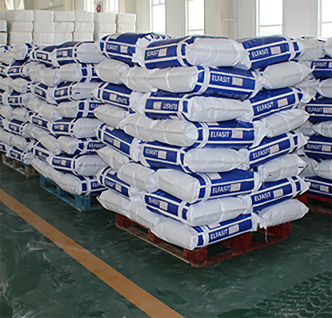
Nov . 24, 2024 09:00 Back to list
latex bonding agent
Understanding Latex Bonding Agents An Overview
Latex bonding agents are crucial materials in construction and manufacturing, commonly used to enhance adhesion properties in various applications. These agents, primarily composed of synthetic latex or natural latex, serve to improve the bonding strength of various surfaces, significantly impacting the quality and durability of finished products. In this article, we will explore the characteristics, applications, benefits, and considerations when using latex bonding agents.
What Are Latex Bonding Agents?
Latex bonding agents are polymers that are dispersed in water, allowing them to provide excellent adhesion and flexibility once cured. The primary components of these bonding agents are polyvinyl acetate (PVA), styrene-butadiene rubber, or acrylic copolymers, which, upon drying, form a flexible, water-resistant film. This film enhances the bond between different materials, making it a popular choice in industries ranging from construction to automotive manufacturing.
Characteristics of Latex Bonding Agents
1. Water Solubility One of the significant advantages of latex bonding agents is their water-based nature. This characteristic makes them easy to apply, clean up, and environmentally friendly compared to solvent-based alternatives.
2. Flexibility Upon curing, latex bonding agents form a flexible film that can withstand slight movements and expansions in the bonded materials. This property is particularly beneficial in applications where materials may settle or shift over time.
3. Quick Drying Time Many latex bonding agents have relatively fast drying times, making them efficient for construction and repair projects, where time is often of the essence.
4. Improved Adhesion These agents significantly enhance the bonding capabilities of materials, joining surfaces such as wood, concrete, tiles, and even fabrics.
Applications of Latex Bonding Agents
Latex bonding agents find usage across various sectors, primarily
1. Construction They are often used in cementitious materials to improve adhesion in tile installations, thin-set mortars, and grouts. By adding latex bonding agents to these mixes, contractors can achieve higher bond strengths, reducing the likelihood of tile failures.
latex bonding agent

3. Textiles In the textile industry, latex bonding agents play a significant role in fabric lamination, adding durability and enhancing the aesthetic qualities of the final product.
4. Automotive In automotive manufacturing, latex bonding agents are used in assembly operations, ensuring that components remain securely bonded under various environmental conditions.
Benefits of Using Latex Bonding Agents
- Environmental Considerations Being water-based, latex bonding agents contribute to lower volatile organic compounds (VOCs), making them a more environmentally friendly option compared to solvent-based agents.
- Versatility They can be used on a variety of substrates, which enhances their appeal for diverse applications.
- Cost-Effective Given their effectiveness and versatility, latex bonding agents often prove to be a cost-effective solution for many bonding challenges.
Considerations When Using Latex Bonding Agents
1. Surface Preparation For optimal results, surfaces must be clean, dry, and free from contaminants such as oils or dust. Proper preparation is essential for maximizing adhesion.
2. Application Temperature The performance of latex bonding agents can be influenced by temperature and humidity. It’s important to adhere to the manufacturer's guidelines regarding application conditions.
3. Curing Time While many latex bonding agents have a fast drying time, full curing may take longer. Users must allow adequate time before subjecting bonded materials to stress.
4. Compatibility It is essential to ensure that the latex bonding agent is compatible with the materials being bonded to avoid failures.
Conclusion
Latex bonding agents are indispensable in various industries, providing enhanced adhesion and durability for bonded materials. Their versatility, environmental benefits, and ease of use make them a preferred choice for many applications. Understanding their characteristics and proper usage can empower users to achieve the best results in their projects, ultimately leading to better quality and longevity of their work. As industry demands evolve, latex bonding agents will continue to play a vital role in innovative bonding solutions.
-
Versatile Hpmc Uses in Different Industries
NewsJun.19,2025
-
Redispersible Powder's Role in Enhancing Durability of Construction Products
NewsJun.19,2025
-
Hydroxyethyl Cellulose Applications Driving Green Industrial Processes
NewsJun.19,2025
-
Exploring Different Redispersible Polymer Powder
NewsJun.19,2025
-
Choosing the Right Mortar Bonding Agent
NewsJun.19,2025
-
Applications and Significance of China Hpmc in Modern Industries
NewsJun.19,2025







